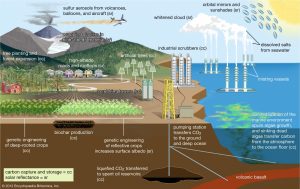1. THE POSTAL BALLOT FOR MEDIA PERSONS:EC
THE CONTEXT: The Election Commission of India (ECI) has issued a list of those persons working in
essential services who can cast vote in upcoming assembly elections through postal ballot in five
states.
THE EXPLANATION:
- The ECI has allowed media persons authorised by it to exercise their franchise using the
postal ballot facility for the upcoming assembly elections in Uttarakhand, Punjab, Manipur
and Goa. - The poll body has permitted persons employed in Information and Public Relation
Department, Health and Family Welfare (Emergency Ambulance Services), Post
Department, Traffic Department, Railways, Electricity Department, Civil Aviation
Department, Metro Rail Corporation of Uttar Pradesh, Doordarshan, All India Radio, and
Bharat Sanchar Nigam Limited to cast their vote via postal ballot.

What is postal voting?
- A restricted set of voters can exercise postal voting. Through this facility, a voter can
cast her vote remotely by recording her preference on the ballot paper and sending it back
to the election officer before counting.
Who else can avail this facility?
- Members of the armed forces like the Army, Navy and Air Force, members of the armed
police force of a state (serving outside the state), government employees posted outside
India and their spouses are entitled to vote only by post. - The exception to the above-mentioned category of voters is provided under Section 60 of
the Representation of the People Act, 1951.
THE SOCIAL ISSUES AND SOCIAL JUSTICE
2. INDIA’S ECONOMIC SYSTEM RIGGED IN FAVOUR OF THE SUPER-RICH:
OXFAM REPORT
THE CONTEXT: The report points out that in India, during the pandemic the wealth of billionaires
increased from Rs 23.14 lakh crore to Rs 53.16 lakh crore. At the same time, more than 4.6 crore
Indians are estimated to have fallen into extreme poverty in 2020.
THE REPORT HIGHLIGHTS:
- The report was published ahead of the World Economic Forum’s Davos Agenda. According
to the Global Oxfam Davos report 2022, while 84% of households in India suffered a
decline in their income in a year marked by the tremendous loss of life and livelihoods, the
number of Indian billionaires grew from 102 to 142. - The report states that just a 1% wealth tax on 98 wealthiest billionaire families in India can
finance Ayushman Bharat, the government of India's national public health insurance fund,
for more than seven years. It added that the collective wealth of India's 100 wealthiest
people hit a record high of INR 57.3 lakh crore (USD 775 billion) in 2021.
CONTINUING DEPENDENCE ON INDIRECT TAXES
- In 2000 the percentage of indirect taxation in the total tax revenue was 63.69%. Due to
Covid pandemic, the dependent on the indirect taxes —especially the tax levied on the sale
and manufacture of goods and services that ordinary Indians depend upon. - Also, the indirect tax as a share of the Union government revenue has been increasing when
there is a decline in the proportion of corporate tax for the same in the last four years.
The additional tax imposed on fuel has risen 33% in the first six months of 2020-21 as
compared to the previous year and is 79% more than pre-Covid levels. - It is important to note, wealth tax for the super-rich was abolished in 2016. Corporatetaxes were lowered from 30% to 22% to attract investment last year, which has resulted in a loss of Rs 1.5 lakh crore, which has contributed to the increase in India's fiscal deficit.
- These trends show that the poor, marginalised, and the middle class paid high taxes despite going through the raging pandemic while the rich made more money without paying their fair share.
LACK OF FUNDS FOR PUBLIC SERVICES
- The India Supplement highlighted the de-prioritisation of education and health in the Union
government budget when these two services were needed the most. Allocation towards
health in 2021-22 saw a decline of 10% from the previous year in the Union budget, while
the allocation towards education in 2021-22 saw an increase of only 10% from the
previous year. - As a percentage of GDP, health spending has remained abysmally low at 1.2 to 1.6% and
increased only by 0.09% over the last 22 years. As a percentage of GDP, education spending
has remained low at 3% and increased only 0.07% over the last 18 years. - With 93 percent of the nation's workforce comprising of informal employment, there has
been little success in bringing them under the ambit of formal employment, which would
give them various benefits like paid leaves, health insurance, paid maternity leaves and
pension”.
PRIVATISATION OF BASIC SERVICES
- The India supplement shows that the high cost of private healthcare affects marginalised
communities, mainly due to its high costs and further widens inequalities. Data from the
National Sample Survey (NSS) 2017-18 shows that Out-of-Pocket Expenditure (OOPE) in
private hospitals is almost six times that in public hospitals for inpatient care and two or
three times higher for outpatient care. The average OOPE in India is at 62.67%, while the
global average is at 18.12%.
WAY FORWARD
- Oxfam India said that India needs to track policy impact better by improving mechanisms
for its measurement. “There is an immediate requirement to start disaggregating more
public statistics by income and introduce a regular collection of data on income and wealth
inequality while ensuring that this data is made freely available in the public domain". - It also highlighted the importance of generating revenue to invest in education and
healthcare. The report pointed out that a temporary 1% surcharge on the wealthiest 10%
of the population could help raise an additional Rs 8.7 lakh crore, utilising the education
and health budget.
THE ENVIRONMENT AND ECOLOGY
3. THE GLOBAL COALITION PUSHES FOR MORATORIUM ON SOLAR
GEOENGINEERING
THE CONTEXT: An international “coalition” of scientists and governance scholars launched an
initiative that calls for a moratorium on the study and development of a controversial climate-
change mitigation strategy known as solar geoengineering.
THE EXPLANATION:
- The scholars are calling for an ‘International Non-Use Agreement on Solar
Geoengineering’. It is particularly opposed to the idea of spraying aerosols in the
stratosphere to scatter some sunlight into space because, the technology is “ungovernable
in a fair, democratic and effective manner”.
The group of experts proposed an international non-use agreement on solar geoengineering that
called upon governments and the United Nations to make the following commitments:
- To prohibit national funding agencies from supporting the development of technologies for
solar geoengineering. - To ban outdoor experiments of solar geoengineering technologies.
- To not grant patent rights for technologies for solar geoengineering.
- To not deploy technologies for solar geoengineering if developed by third parties
- To object to future institutionalisation of planetary solar geoengineering as a policy option in relevant international institutions, including assessments by the Intergovernmental Panel on Climate Change.
WHAT IS SOLAR GEO ENGINEERING?
According to scientists, the solar geoengineering, also known as solar radiation management or
modification, is a set of technologies to lower global temperatures by artificially intervening in the
climate systems.
WHY IT IS CONTROVERSIAL?
- Solar geoengineering is controversial because it’s impossible to contain its consequences in
one geographical region and, by extension, to know their full extent. - For example, if the US government decides to spray large quantities of aerosols into the
stratosphere over its west coast, and scatter sunlight, there will be implications for the
American mainland, for temperature and wind patterns over the Pacific Ocean, for marine
life (and the livelihoods of people that depend on them), and could cascade into longer-
term effects over South America, Oceania and Asia as well. - The experts have also expressed concerns that the availability of solar geoengineering technologies in the future could disincentivise the efforts and commitments being made towards achieving carbon neutrality in the world.

4. ANIMAL BIODIVERSITY LOSS LIMITS PLANTS DUE TO CLIMATE CHANGE
THE CONTEXT: According to a new study, the plant worldwide has a 60 per cent lower chance of
adapting to climate change due to the declining numbers of birds and mammals.
THE EXPLANATION:
- According to the study, more than half of the plant species depend on animals and plants
for seed-dispersing. But the number of mammals, birds, fish, plants and insects has dropped
to an average of 68 per cent from 1970 to 2016, the Living Planet Report 2020 revealed. - With declining animal biodiversity, fewer seeds will reach new grounds. Consequently,
plants might lose their ability to migrate to a newer and more suitable environment. - The scientists used computer models to draw comparisons between seed dispersal in the
real world and a simulated world with no extinctions and range shrinkage of birds and
mammals. - They found that seed dispersal function globally has “declined sharply” from its natural level, with 60 per cent fewer seeds travelling far enough to keep pace with climate change.
- The seed-dispersal losses were especially severe in temperate regions across North America, Europe, South America and Australia.
Effects on India
- India is home to over 45,000 species of plants and 91,000 species of animals.
- Over the last five decades, India has lost 12 per cent of its wild mammals, 19 per cent
amphibians and 3 per cent birds. - In northeast India, seed dispensers such as elephants and bats are heavily hunted. This loss
limits the movement of seeds in the region. - The rest of the country, on the other hand, has a higher density of elephants, horn bills and
other fruit-eating animals. But the region is witnessing fragmentation and habitat
degradation, which impact seed dispersal. - India has smaller patches of forests. This means animals are likely to drop off seeds on the
rooftops. “Livestock grazing in forest areas impacts seed dispersal. Invasion is another major
issue.
THE PRELIMS PRACTICE QUESTIONS
QUESTION OF THE DAY 18 TH JANUARY 2022
Q1. Consider the following statements about Kathak:
1. It is a classical dance form of India originated in Southern India.
2. Its foundations are rooted in Natya Shastra, an ancient Sanskrit text written by Bharata
Muni.
3. The exponents of Kathak convey stories through rhythmic foot movements, hand gestures,
facial appearances and eye work.
Which of the statements given above is/are incorrect?
a) 1 only
b) 1 and 2 only
c) 2 and 3 only
d) 3 only
ANSWER FOR 17 TH JANUARY 2022.
Answer: D)
Explanation:
- Vitamin D works more as a hormone and is involved in a host of biochemical reactions. It is
key to maintaining metabolic functions, immune system, bone health and plays a crucial
role in depression, mood swings, anxiety, and sleep quality.


